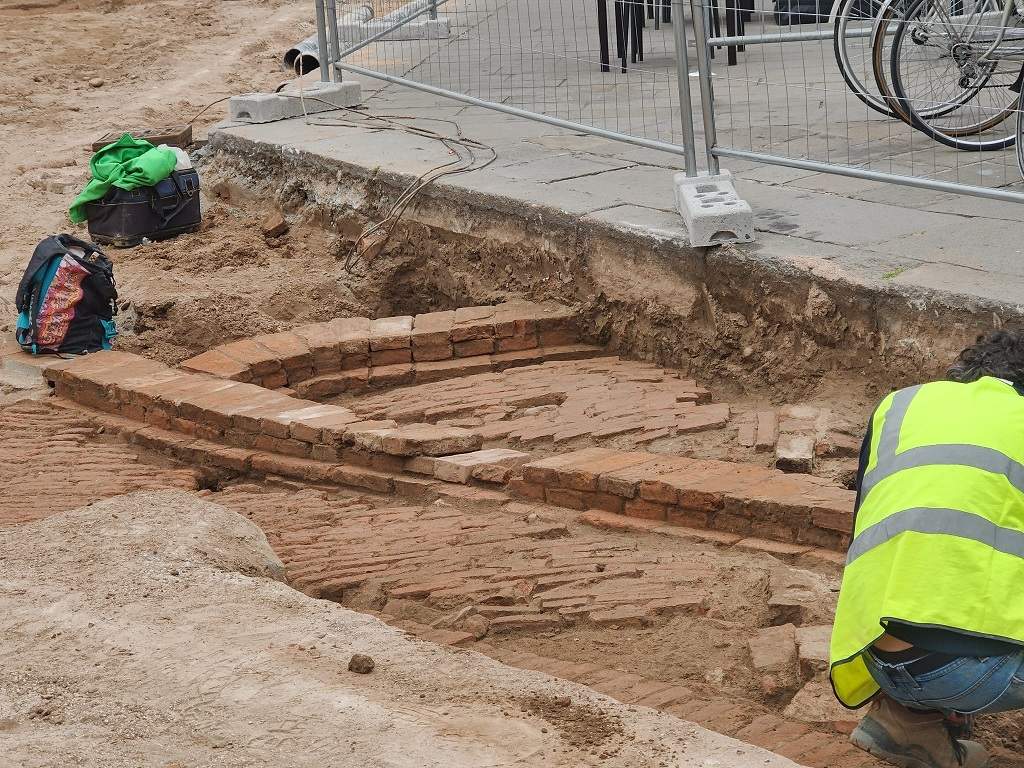Excavations underway in Ferrara near the Castello Estense, in Piazza Savonarola, have revealed portions of the ancient medieval pavement, and with them additional fragments possibly dating back to the time before the castle was built, the “herringbone” roofing, the foundations of the covered street from the time of Alfonso I d’Este (in power from 1505 to 1534). Already in the first three days of excavations, therefore, several elements have been collected by the archaeologists of Phoenix archeology, commissioned by the municipality, with the coordination of the Superintendence.
The area, of about 1,000 square meters, is affected by porphyry re-roofing works that complement those, recently completed, in Largo Castello. Archaeologists, working at the same time as the construction site, in these hours have unveiled several portions where the bricks, placed cut, outline the outline of the ancient open area that looked over the Este Castle. On the east side is the outline of the currently most prominent masonry, but traces are also emerging on the opposite side. A little further on, digging deeper (to a depth of about one meter), another pavement has come to light, which scholars are comparing with the situation in the neighborhood prior to the construction of the Castle (1385).
Further news also emerged under Via Coperta, the protected walkway located on the main floor of the Municipal Palace, supported by five arches. Here excavations uncovered signs of the ancient extension of the street, dating back to Alfonso I d’Este. In particular, extension points were found along the walls, in the foundations, corresponding to those detected in height during the restoration of the second floor in 2005.
“A circle that closes,” explains Chiara Guarnieri, coordinator of the team of archaeologists. The correspondence between historical elements was also found in the paving: the arrangement of bricks that emerged in the open area in front of the Castle is also herringbone, completely the same as that found in Corso Martiri della Libertà, in the previous repaving works, in 2010.
The outcome of the subsurface surveys (the excavation that is carried out in the context of the construction site is on average about 40 centimeters below the surface) currently being studied and investigated in depth, will in fact be condensed into a popular work for use also by schools, in a project promoted by the Administration and the Superintendence. The ancient pavements will be secured, protected by special covers, before the laying of the subgrade, then the repaving, which will take place with porphyry cubes larger than the current ones, to improve road performance and to give homogeneity to the square with respect to the surface of Corso Martiri della Libertà.
“The richness of history,” says Mayor Alan Fabbri, “continues to emerge and is revealed thanks to the careful and painstaking work of the archaeologists, whom I thank. The repaving of the areas overlooking the Castle will therefore allow not only to give a worthy setting to the symbolic monument of Ferrara, but also to acquire important and new elements to reconstruct the city’s past.”
 |
| Ferrara, ancient medieval pavement resurfaces from excavations at the Estense Castle |
Warning: the translation into English of the original Italian article was created using automatic tools. We undertake to review all articles, but we do not guarantee the total absence of inaccuracies in the translation due to the program. You can find the original by clicking on the ITA button. If you find any mistake,please contact us.